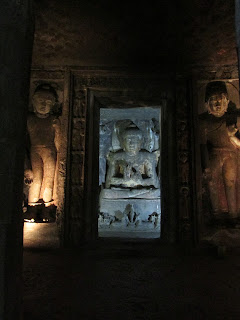As I’ve been traveling and becoming accustomed to Indian
lifestyle the past two weeks, one important aspect of my time here completely
skipped my mind- I have to go to school.
I started my first week of classes last week and quickly learned this
won’t be like my time studying abroad in Turkey. As an American exchange student in Turkey,
school for me basically meant showing up for homeroom then spending the rest of
the day meandering between playing piano, violin, and taking trips to the beach
(while passing every course with flying colors).
Although disappointed that studying
turns out to be a critical element of studying abroad, it’s been interesting
relearning and discussing topics from an Indian aspect. For example, in an American Social Justice
class race would be a driving theme of the majority of lectures. In an Indian Social Justice class, however,
the caste system is the topic of discussion involving inequality among citizens
that are supposedly granted equal rights.
Just as in America there are underlying judgments placed among different
races, this same judgment is used among the different castes of Indian society. I’m also becoming somewhat obsessed with my
Public Health class- mainly because a lot of my previous studies in Public
Health in America have almost no relevance to Public Health in India. Of course the basic framework of Public
Health is the same everywhere: which populations are at risk of which diseases,
how to educate and promote behavior change, incorporating community involvement,
development of sustainable programs, etc, etc.
Health and wellness is largely marketed toward the American population through
the pharmacological industry and education is started from a young age with the
main topics concerning nutrition and sex education. Health promotion and education in India,
however, is fighting the same struggle as its continually evolving society:
tradition vs. modernization. Traditionally,
India has survived on traditional forms of medicine for thousands of years such
as Ayurvedic medicine, yoga and homeopathic remedies. As more western styles of medicine have been taking
a claim over the healthcare field over the past 50 years or so, more and more
Indians are fighting for their traditional forms of healing to be recognized
not only as alternative forms of medicine but real and effective forms which
have sustained their society for thousands of years.
After a long first week of classes,
the majority of our group left Friday night for a weekend trip to visit the
ancient Buddhist caves of Ajanta and Ellora.
These caves filled with sculptures and paintings dating back to 1 AD
were absolutely breathtaking not to mention the tropical landscape and
waterfalls covering the land. So among
all this history and beauty you would find it hard to believe that us, 25
college kids from America, turned out to be the main attraction. It seemed almost every time we turned a
corner, a group of 50 Indian school kids would start screaming and chasing
after us to take a picture with us. I
made the mistake of agreeing to take a picture with one man and before I knew
it, I was swarmed by 20 other of his friends, everyone pushing and fighting to
get into the picture. Parents were
throwing their kids at us, people were fighting for chances to take pictures
with us- it was without a doubt one of the most bizarre situations of my
life. Talking with one of these men it
turns out a lot of them are farmers from remote villages who have never seen
foreigners before so it’s a big deal when they actually meet one.
Although humorous for the most
part, it brings to light another large difference between American and Indian
society- the acceptance of outsiders. A
foreigner in America would have little difficulty assimilating into American
culture and walking around relatively undetected as out of the ordinary. As a
white girl with red hair in India, no matter how well I can walk the walk and
talk the talk of Indians, my appearance screams ‘outsider, foreigner,
different.’ I can accept the stares and
curious looks while walking down the street- being mobbed by a group of 50
Indian school kids, however, will take some time getting used to.





















No comments:
Post a Comment